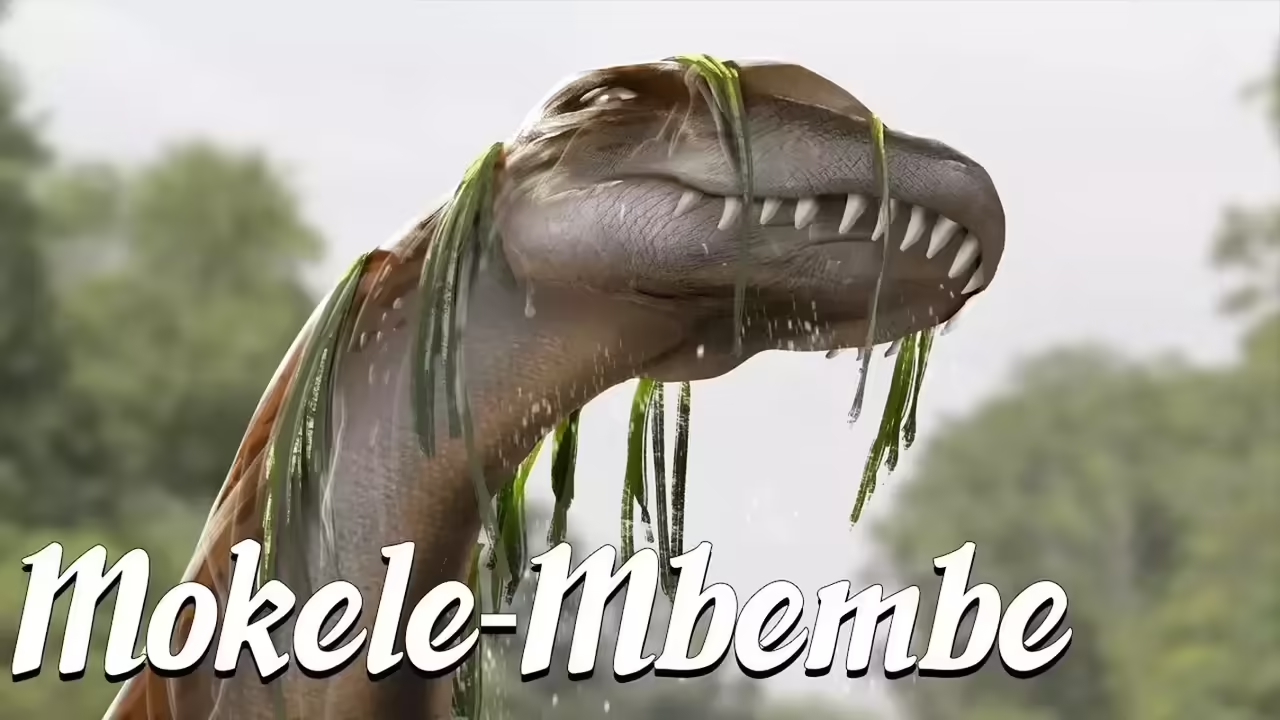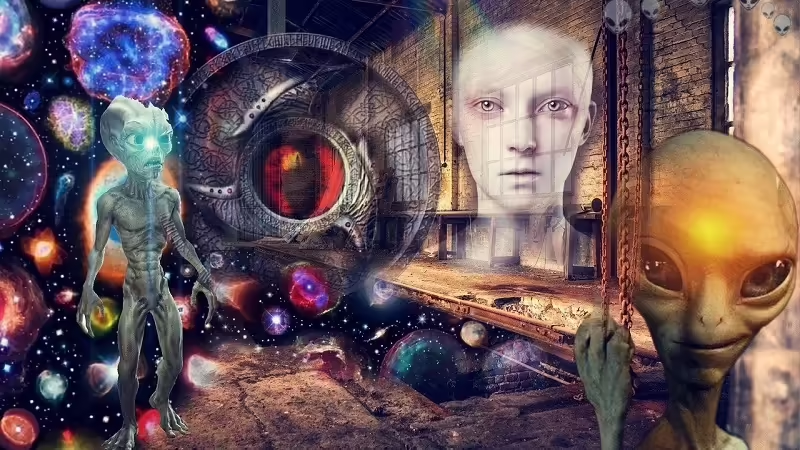
One of the greatest mysteries of humanity is everything that has to do with the time of the dinosaurs. Huge fossils have been found in various parts of the globe, but recently there is one of these extinct specimens, which has caused great interest in the scientific community. We are talking about the Mokele-Mbembé, the last dinosaur in the world:
The last legend of the Congo
Marcelin Agnagna, a Congolese zoologist with extensive experience, travels through the most lush jungles of the country with the aim of expanding his knowledge of the biodiversity of the area. Suddenly, the vegetation shakes vigorously a few meters from him and in a small clearing, before the zoologist appears a four-legged animal, about ten meters long, with short legs and claws…
Of the mysteries of the animal kingdom, this is one of the most exciting. We are located on the banks of the Likouala River, far from the areas of civil and military conflict, an enclave in the north of the country that appears almost blank on maps. Few men have dropped into these lands that combine jungle with swamps. It is perhaps for this reason that the environment is almost virgin and is, therefore, suitable for enigmatic animal species to live there without feeling the environmental lashes of modern man.
One of the first adventurers to tour the mysterious region was the German soldier Freirer von Stein zu Lausnitz. It was his guides who put him on the trail:
“They say it is a brownish-gray beast about the size of an elephant. It has a long flexible neck and a single tooth, albeit a very large one. A few speak of a muscular tail like that of an alligator. It lives in rivers and climbs to the banks in broad daylight to look for food.”
It was the natives themselves who told the expeditionary the name they have given the creature since ancient times: mokele-mbembe. And despite the fact that there are two-hundred-year-old accounts, many more testimonies and evidence were collected during the 20th century, but it was from the 1980s when the matter aroused the interest of some researchers.
In 1980 and 1981, the American biologist Roy Makal carried out two expeditions to the place, they did not obtain definitive proof, but they did obtain many testimonies, and he even located several footprints that served to certify that they did not correspond to any known animal.
Another expedition, this time by scientists from the University of Brazzaville: a short time later repeated the attempt to find that mysterious beast that is said to inhabit the remote marshes. This time, the scientists were luckier. The biologist and zoologist Marcellín Agnagna and his team came face to face with that animal. It was a species with an appearance unlike any other known today, and with a morphology very similar to that of a large dinosaur.
According to the investigations, the strange animal was herbivorous and its tracks measured up to almost a meter in length in some cases. From his description, the animal resembled dinosaurs, but there was a catch: those Jurassic beasts disappeared 65 million years ago.
During the nineties two more expeditions were carried out. And while they found plenty of evidence of the animal’s existence, they were never able to capture one of these creatures. It was tried again in 2001 by a group of researchers from the Cryptozoology Group of British Columbia (Canada). The expedition, which they called Crypto-safari 2001, did not serve to definitively determine the existence of the animal, despite the fact that they collected many testimonies and further outlined what is known about it.
Very few doubted the existence of this great almost amphibious creature. Another thing was to identify its nature. If its imprints were found today sedimented in a bed of stone, no zoologist would doubt that it is the footprint of a dinosaur. In this case, we would once again be talking about a living fossil, but the researchers do not close the doors to other theses which, however, also start from the fact that it is an unknown animal.
Some researchers argue that it could be a reptile similar to the Komodo dragon, which despite being a huge, three-meter lizard, was not discovered until 1912. Another theory holds that it is a new species of hippopotamus not known to date. In any case, the mystery is served: a large unknown animal lives in the depths of the Congo.
Reports of the existence of the Mokele-Mbembe have been around for over a century. Initial accounts from local people described a large creature that lived in the depths of rivers and swamps, feeding on plants and animals. These stories became more popular in the 1950s, when Western explorers began to take an interest in the creature.
One of the most common pieces of evidence put forward as evidence for the existence of the Mokele-Mbembe are sightings of the creature. Various sightings have been reported over the years, with many coming from people who claim to have seen the Mokele-Mbembe while working or traveling in the area. Some of these sightings include detailed descriptions of the creature, which has led some to believe that it is too detailed to be a simple invention.
Other possible evidence of the Mokele-Mbembe are the strange sounds and noises that have been reported in the jungle. Some believe that these sounds may be produced by the creature, either as a means of communication or as a means of warning to keep humans away from its territory.
In addition, there are those who have presented footprints and traces of the creature as evidence of its existence. According to some reports, these tracks are too large to belong to any known animal in the area, suggesting that they could be from an unknown animal.
However, despite these reports, many scientific experts have pointed out that the evidence presented so far is inconclusive. There is no hard physical evidence, such as a photograph or a captured specimen, that would prove without a doubt the existence of the Mokele-Mbembe. Some critics have also suggested that the sightings and other evidence could be explained by misperception, fraud, or simply people’s exaggerated imagination.
Recent expeditions and sightings El Mokele-Mbembé
For decades, experts in zoology and paleontology have tried to rule out the existence of the Mokele-Mbembe, arguing that there is insufficient scientific evidence to support its existence. However, reports of recent sightings and expeditions have emerged which have brought the legend of the Mokele-Mbembe back into the spotlight.
In 2001, the American biologist William Gibbons carried out an expedition in search of the Mokele-Mbembe in the Congo. During the expedition, Gibbons and his team collected accounts of sightings of the creature from local tribes. They also obtained scat samples believed to belong to the Mokele-Mbembe, but no scientific test could be done to confirm this.
Another sighting occurred in 2012, when a BBC crew filmed a strange creature in the waters of the Congo River that is believed to be the Mokele-Mbembe. Although the team was unable to confirm the identity of the creature, the video was widely shared and reignited interest in the search for this legendary creature.
In 2018, an expedition led by British zoologist Adam Davies and American explorer Jayaprakash Joghee conducted a search in the Congo for the Mokele-Mbembe. During the expedition, the team collected testimonials from locals who claimed to have seen the creature. They also collected footprints and hair samples that are believed to belong to the creature. However, there is still no conclusive evidence confirming the existence of the Mokele-Mbembe.
Recent sightings and expeditions of the Mokele-Mbembe have reignited the debate about the possible existence of this legendary creature. Although some scientists have ruled out its existence due to a lack of conclusive evidence, others argue that the search for the Mokele-Mbembe is important because it may lead to exploration of remote and little-known regions of the world, which could result in the discovery of new species.
Characteristics and description of the Mokele-Mbembe
According to the accounts of the locals, the Mokele-Mbembe is a large animal, similar to a sauropod, with a length of between 10 and 15 meters. It has a stout body, thick legs, and a long tail. It is also said to have a long neck and a small head, with sharp teeth and a long thin tongue.
Unlike sauropods that went extinct millions of years ago, the Mokele-Mbembe is believed to still inhabit the Congo, suggesting that it might have some adaptations to living in a different environment than its ancestors. It is believed that it is a semi-aquatic animal, and that it can spend long periods of time in the water.
Although there is no conclusive scientific evidence to support the existence of the Mokele-Mbembe, reports of sightings suggest that it behaves shyly and avoids interaction with humans. Some experts suggest this could be because the Mokele-Mbembe is an endangered animal and has learned to avoid humans to protect itself.
Despite reports of recent sightings and expeditions, some zoology and paleontology experts have argued that the description of the Mokele-Mbembe is inaccurate and that it could refer to other Congolese animal species, such as the hippopotamus or elephant. They have also noted that the lack of conclusive scientific evidence suggests that the existence of the Mokele-Mbembe is unlikely.
What do governments say about the Mokele-Mbembe?
In the Republic of the Congo, the government has been cautious in its statements about the Mokele-Mbembe. Although the government has not denied the existence of the animal, it has also not officially acknowledged its existence. Instead, he has stated that he is willing to support scientists who wish to investigate the region for evidence of the existence of the Mokele-Mbembe.
On the other hand, in Cameroon, the government has been more forceful in its statements. In 1995, the Cameroonian government banned the hunting of the Mokele-Mbembe and other animals considered sacred by the indigenous peoples of the region. The government has also declared the Mokele-Mbembe to be an important part of the region’s cultural heritage and has urged tourists to respect the culture and beliefs of the local people.
As for the scientific community, many experts have questioned the existence of the Mokele-Mbembe due to the lack of concrete evidence. Some believe that the legend of the Mokele-Mbembe could have arisen from sightings of elephants or hippos, while others suggest that it could be an animal unknown to science.







